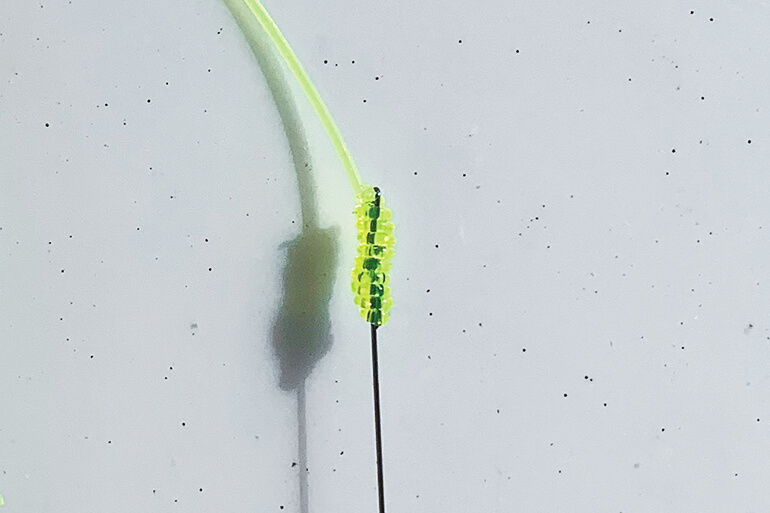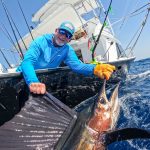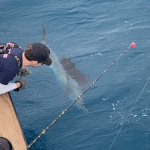Article Courtesy: floridasportsman.com | Originally Published: 9/25/20 | Click here for original article
Rigging Wire Leaders for Toothy Fish
It’s pretty clear: Baits get more bites on clear leaders. This is true for live baits or trolled dead baits. This presents a problem. You can either have great swimming baits, but go ahead and say goodbye to almost every wahoo or kingfish you run across.
A great compromise for you to try is using a trace of wire attached to a monofilament leader by way of an Albright knot or some other low-profile connection. The longer, and heavier you make the wire, the less likely you are to lose a toothy fish. The lighter and shorter you make the wire, the better your bait swims, and the more strikes you’ll get.
Albright special knot is a good low-profile connection. Hi-vis line used for illustration; clear mono or fluorocarbon typically used.
Captain George LaBonte, who mostly fishes out of Jupiter and Stuart, has finally convinced me that a short piece of No. 5 wire between a 40-pound mono leader, and a J-hook or circle hook stuck through the shoulders of a sardine or pilchard will do absolutely nothing to discourage a sailfish or wahoo from grabbing himself a snack.
Unlike mono or fluorocarbon, wire leaders can safely sit between sharp teeth without breaking.
When trolling natural baits, you obviously need a swivel somewhere. You can rig the prettiest ballyhoo ever, but it will roll, and after a few minutes your line will be a twisted mess. You may not see the twist, but let the line pop out of your outrigger, and I’ll promise you if there’s a twist in your line—it’ll go around the rod tip, and a loud snap will be the next sound you hear, and a free-jumping billfish will appear behind your boat. (Don’t ask me how I know this.)
Drifting is another story. If you’re not pulling your bait through the water, you’re not likely to twist your line. Hence you will have no terminal tackle in the water besides the trace of wire, and the hook.
Capt Ryan Harrington hoists a big smoker-bound king mackerel.
If you’re a fan of wind on swivels, you can make your mono trolling leaders as long as you want. For me, I hate winding any swivel through my guides, so I make my mono (usually 60-pound-test for pulling ballyhoo) just long enough to keep my 150-pound swivels out of the water, but not so long that we can’t gaff that fat wahoo when the swivel is at the rod tip.
With a little practice you’ll be able to Albright a 60-pound piece of soft mono to your wire fast enough to leave the mono on your rods full time, and a couple dozen wire traces stored neatly in a tackle tray.
Removable dividers were added to this Plano Edge box to help keep the leaders from tangling, but may be omitted.
More Tips for Traces
- Albright knot giving you fits but you’d like something smaller than a swivel? Try a No. 4 welded, round-wire ring—You can buy them online from Owner hooks.
- Want to protect your rigs from corrosion while they’re stored? The new Plano Edge Series tackle boxes incorporate Volatile Corrosion Inhibitor (VCI), which fights rust. Get 3600 or 3700 sizes and make your wire traces to fit. These boxes also have a convenient one-piece lid. And, they’re very durable.
- Think you’ll want a stinger rig at some point during the day? Pre-assemble a couple dozen short (6- to 7-inch) wire pieces with the trailer hook of your choice. On the water, haywire twist the trace to the eye of your bait hook and bring those short-striking kingfish to the boat. FS






